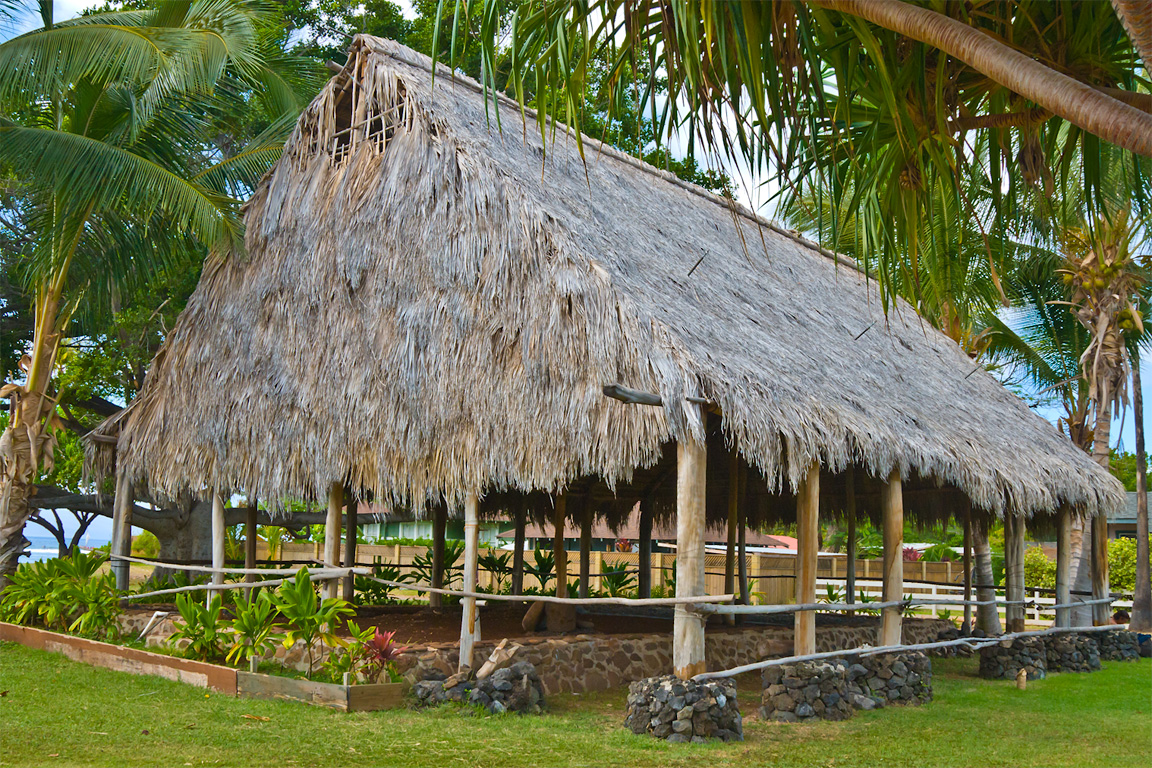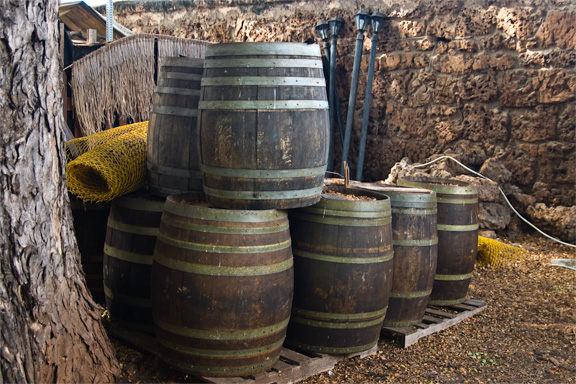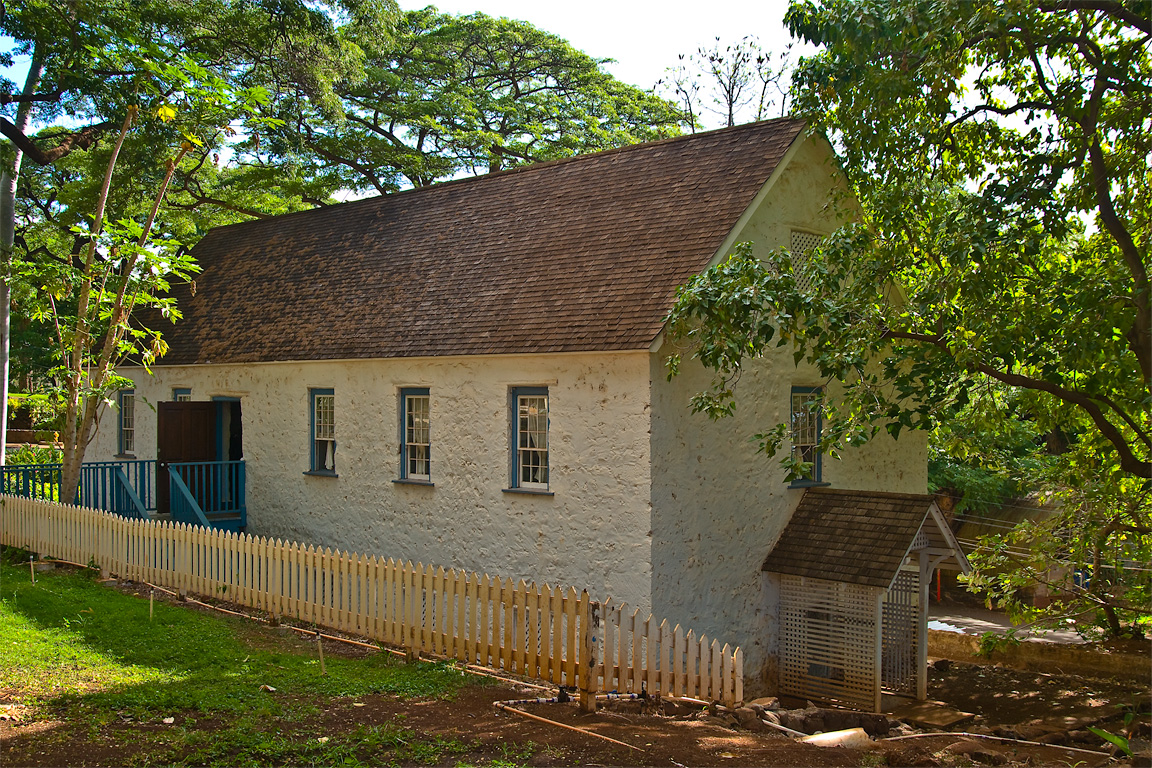Lahaina History
Besides catering to the hedonistic demands of the modern visitor, Lahaina has a long history of doing the same for the ancient ali`i and even the sailors and other early visitors. An entire district was allocated for the royalty — and part of that area is preserved today. Not only was Lahaina a center for the royalty prior to King Kamehameha's conquest and unification of all the Hawai`ian islands — but it also served as the capitol of the kingdom from 1820s to the 1840s. This pavilion stands today as a reminder of the royal connection.

 In fact, a few steps away was once a large complex of fish ponds, canals and an island for use of the ali`i. In the early 1900s the ponds were filled in and this site eventually found use as ball fields — although they are now unused since ancient human remains were discovered buried here. A coalition of organizations and individuals have formed "The Friends of Moku`ula" and have been working for more than a decade researching and developing plans to develop a park that recreates the environment from that time.
In fact, a few steps away was once a large complex of fish ponds, canals and an island for use of the ali`i. In the early 1900s the ponds were filled in and this site eventually found use as ball fields — although they are now unused since ancient human remains were discovered buried here. A coalition of organizations and individuals have formed "The Friends of Moku`ula" and have been working for more than a decade researching and developing plans to develop a park that recreates the environment from that time.
From their website, "The Friends of Moku`ula have commissioned Ed Kayton to paint a picture of their vision for the restoration of Moku`ula and the surrounding fish ponds. They plan to eventually recreate grass houses in the style dating to the period of King Kamehameha III. A pohaku monument is also planned for the islet. The island area will be strictly for sacred and secular ceremonial use by Native Hawaiians, however, it may be open once a year to invited outsiders." Click here for an interesting video explaining the project.
This monolith stands at the edge of the property to mark the royal site.
 Nearby is the Wainee Cemetery, the first Christian cemetery in Hawai`i. There are many notable people buried here.
Nearby is the Wainee Cemetery, the first Christian cemetery in Hawai`i. There are many notable people buried here.
- King Kaumualii, the last king of Kauai.
- The sacred Queen Keopuolani, the highest royalty by virtue of bloodlines in all Hawaii, born in Wailuku in 1780; she was the first Hawaiian baptized as a Protestant.
- High Chief Hoapili, a general and King Kamehameha the Great's closest friend; Hoapili married two of Kamehameha's queens, Keopuolani and Kalakua.
- Hoapili Wahine (Kalakua), governor of Maui from 1840 to 1842, who donated 1,000 acres of land to start Lahainaluna School.
- Kekauonohi, one of the five queens of Kamehameha II, born in Lahaina in 1805, who served as governor of Kauai from 1842 to 1844.
- High Chiefess Liliha, granddaughter of King Kahekili; Liliha visited King George IV with her husband, Boki, Kamehameha II and Queen Kamamalu. In 1830 Liliha started a rebellion with 1,000 soldiers on Oahu while she was governor there. Her father, Hoapili, forced her to give up her office and return to Maui.
- Princess Nahienaena, darling of the high chiefs and the Hawaiian people, sister to kings Kamehameha II and III.
Additionally many missionary children are buried here.
 Continuing my historic site walking tour,
I visited the Old Lahaina Prison also known as Hale Pa`ahao (loosely translated meaning "stuck in irons"). It was built in 1852 to house unruly sailors who failed to return to their ships by sundown, as well as unruly natives. The coral blocks that constitute the walls were actually "re-purposed" from the old fort whose remains still stand near the harbor.
Continuing my historic site walking tour,
I visited the Old Lahaina Prison also known as Hale Pa`ahao (loosely translated meaning "stuck in irons"). It was built in 1852 to house unruly sailors who failed to return to their ships by sundown, as well as unruly natives. The coral blocks that constitute the walls were actually "re-purposed" from the old fort whose remains still stand near the harbor.
 The prison was probably not a particularly nice place to stay but signs indicated that life here may have been a little more laid back than is true of prisons today. Some prisoners were allowed to leave to care for family — and family members were allowed to visit and provide food for the prisoners.
The prison was probably not a particularly nice place to stay but signs indicated that life here may have been a little more laid back than is true of prisons today. Some prisoners were allowed to leave to care for family — and family members were allowed to visit and provide food for the prisoners.
 This building was where the prisoners lived. It looked quite tiny to me — I guess there were not as many prisoners as one might expect.
This building was where the prisoners lived. It looked quite tiny to me — I guess there were not as many prisoners as one might expect. Just to the side of the building above is one of the largest Monkeypod trees I've ever seen. It is huge! There is an interesting old photo on the Lahaina Restoration Organization's website showing the building above plus a much smaller Monkeypod tree. Click here to see that photo.
Just to the side of the building above is one of the largest Monkeypod trees I've ever seen. It is huge! There is an interesting old photo on the Lahaina Restoration Organization's website showing the building above plus a much smaller Monkeypod tree. Click here to see that photo. Out back, supplies. Now don't you think it might have been easy to move a couple barrels over next to the wall then escape over it?
What would keep the prisoners from doing that?
Out back, supplies. Now don't you think it might have been easy to move a couple barrels over next to the wall then escape over it?
What would keep the prisoners from doing that? Of course, why would you want to escape when you get regular meals and can enjoy the plumeria?
Of course, why would you want to escape when you get regular meals and can enjoy the plumeria? Last but not least on my historical tour of Lahaina was Hale Pa`i, located on the Lahainaluna High School campus (fortunately, no school the day I drove up there). The name means "the house of printing". The building was constructed in 1837 to house a printing press that had been previously operated out of a small thatched roof building. Of course, the missionaries were the early operators of that press and the original school, Lahainaluna Seminary. Thus many of the oldest texts were religious in nature — some of which are now on display in this restored building. Other old texts tell of the outside world with strange animals such as one with an extremely long neck climbing to the sky (giraffe) and a huge one with a nose that stretched to the ground (elephant).
Hale Pa`i operates now as a museum but it is rather off the beaten patch since it is not near downtown Lahaina. It is well worth a visit to see the old California job case which held the movable type assembled by hand then printed on a letterpress-type printing press (one of those is on display too). The volunteer working the day I visited was most informative — I think that she got so few visitors that she just wanted someone to talk to — and I enjoy listening and learning.
